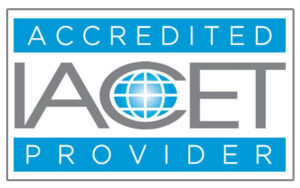8-Hour Fall Prevention (SST-307)
Description
The 8-Hour Fall Prevention (SST-307) course is a specialized training program designed to provide participants with the knowledge and skills necessary to prevent falls in the construction industry. Falls are one of the leading causes of injuries and fatalities in construction, and this course focuses specifically on strategies to mitigate fall hazards and promote a safe working environment.
During the course, participants will learn about the various types of fall hazards encountered in construction, including falls from heights, falls from ladders, and falls through openings. They will be introduced to best practices, safety regulations, and industry standards for fall prevention, such as those established by OSHA.
The training will cover topics such as hazard recognition, fall protection systems, personal protective equipment (PPE), safe use of ladders and scaffolds, and proper fall arrest techniques. Participants will learn how to assess fall hazards, select appropriate fall protection measures, and effectively communicate safety protocols to workers.
Through a combination of lectures, discussions, case studies, and hands-on activities, participants will develop the necessary skills to identify potential fall hazards, implement control measures, and respond appropriately to fall-related incidents. The course will emphasize practical techniques and real-world scenarios to enhance participants’ understanding and application of fall prevention strategies.
THIS IS AN AWARENESS-LEVEL TRAINING ONLY and does not provide any other qualification or authorization outside of the Site Safety Training Card.
Language: English, Spanish, and Portuguese.
Duration: 8 Hours
Course Code: SST-307
Learning Objectives:
Outline regulatory safety requirements associated with falls, including OSHA’s Subpart M which includes:
- Understanding Fall Hazards: Participants will develop an awareness of the different types of fall hazards encountered in the construction industry, including falls from heights, falls from ladders, and falls through openings.
- Fall Protection Systems and Equipment: Learners will gain knowledge of various fall protection systems and equipment, such as guardrails, safety nets, personal fall arrest systems (PFAS), and positioning systems.
- Hazard Recognition and Assessment: Participants will learn how to identify fall hazards in the workplace, conduct hazard assessments, and evaluate the severity and potential consequences of these hazards.
- Fall Prevention and Control Measures: The course will cover strategies and best practices for preventing falls, including engineering controls, administrative controls, and safe work practices specific to different construction tasks and scenarios.
- Proper Use of Personal Protective Equipment (PPE): Participants will understand the importance of using appropriate PPE for fall protection, including harnesses, lanyards, lifelines, and anchor points, and learn how to inspect, don, and properly use this equipment.
- Safe Use of Ladders and Scaffolds: Learners will gain knowledge of ladder and scaffold safety, including proper setup, inspection, and safe practices for working at heights.
- Fall Arrest Techniques and Rescue Planning: The course will cover proper techniques for fall arrest, including body positioning, clearance requirements, and post-fall rescue procedures.
- Regulatory Compliance: Participants will become familiar with relevant fall protection regulations, standards, and guidelines established by organizations such as OSHA, ensuring compliance with legal requirements.
- Communication and Training: The training will emphasize the importance of effective communication among workers, supervisors, and site safety personnel regarding fall hazards, prevention measures, and emergency response protocols.
Requirements
- No prerequisites are required to take this course.
- Make-up time is not permitted for this training course
- Per Local Law 196, in order to continue to operate in the City of New York, some workers and supervisors are required to complete a minimum number of hours of approved site safety training. This NYC Department of Buildings-Approved curriculum is a prescribed (required) course that fulfills one of the requirements for an individual applying for a Site Safety Training (SST) Card.
Features
- CEUs: 0.8
- CEU Requirements: 100% attendance for the course.
- Completion of IACET Registration Form
- Active participation in all class exercise
- As applicable, achievement of minimum passing score on required end-of-course examination
- Participation and submittal of end-of-course evaluation form
Target audiences
- Construction Workers: All construction workers, including laborers, tradespeople, and contractors, who perform tasks at heights or in areas where fall hazards are present should take this course. It provides them with the necessary knowledge and skills to protect themselves and others from fall-related accidents.

